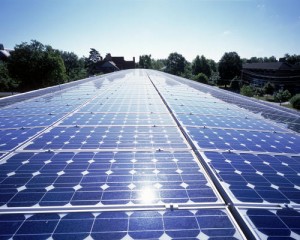 The International Energy Agency (IEA) continues to plug the energy transformation necessary if we are to have any hope of staying within a 2oC rise in global temperature. This month has seen the publication of Energy Technology Perspectives 2012 (ETP 2012) in which they explain the technologies and behaviours that according to the press release “will revolutionise the entire energy system and unlock tremendous economic benefits between now and 2050”. My references to the book’s content in what follows are derived from the executive summary. (The book is priced.)
The International Energy Agency (IEA) continues to plug the energy transformation necessary if we are to have any hope of staying within a 2oC rise in global temperature. This month has seen the publication of Energy Technology Perspectives 2012 (ETP 2012) in which they explain the technologies and behaviours that according to the press release “will revolutionise the entire energy system and unlock tremendous economic benefits between now and 2050”. My references to the book’s content in what follows are derived from the executive summary. (The book is priced.)
ETP 2012 argues that the technologies we already possess are adequate to the task of cutting emissions drastically if used in an integrated way. The resultant overhaul of the world’s energy system by 2050 will not come cheap. Considerable extra investment money will be needed, $36 trillion by their calculation. But that is genuine investment, not cost, and moreover investment with an excellent return of $100 trillion in savings through the reduced use of fossil fuel. Investing in clean energy makes excellent economic sense at the same time as assisting in the mitigation of climate change.

 A pleasant surprise this morning to see across the front page of the Waikato Times the headline “
A pleasant surprise this morning to see across the front page of the Waikato Times the headline “ Grid tie solar power is becoming a no-brainer! Photovoltaic (PV) solar power generation has made enormous advances over just the last two years. The cost of panels and assorted gear has fallen dramatically so that in NZ grid tie solar systems in the 2KW peak power range can be purchased for under NZ$10,000 (including GST) from many outfits.
Grid tie solar power is becoming a no-brainer! Photovoltaic (PV) solar power generation has made enormous advances over just the last two years. The cost of panels and assorted gear has fallen dramatically so that in NZ grid tie solar systems in the 2KW peak power range can be purchased for under NZ$10,000 (including GST) from many outfits. Soon after writing the post in which I reported Carbon War Room CEO
Soon after writing the post in which I reported Carbon War Room CEO